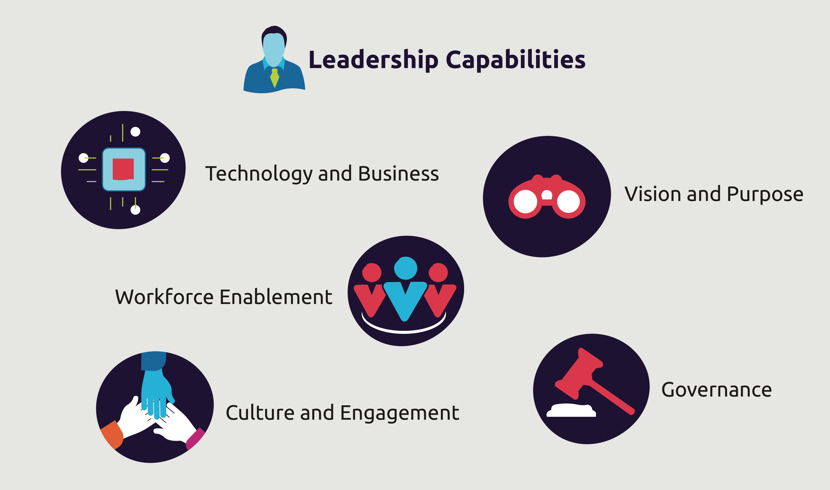This article appears in the Spring 2019 digital issue of DOCUMENT Strategy. Subscribe.

According to a recent survey conducted by Capgemini of over 1,300 global executives charged with digital transformation within their organizations, companies are still struggling to turn their investments into real business outcomes six years on. Some of this stagnation can be attributed to the increasing complexity introduced by newer innovations, such as artificial intelligence (AI), Internet of things (IoT), and enterprise-wide process automation, as well as the deep and seismic changes to traditional business models that are required.

Image by: gonin, ©2019 Getty Images
To keep up with evolving customer needs and the necessary infrastructure required to orchestrate seamless customer experiences, organizations continue to invest heavily in the technologies that enable the digital transformation of their processes and products. In fact, these investments are expected to grow to almost two trillion dollars by 2022, according to research conducted by IDC. As companies pour more and more money into digital technologies, the question remains: Are these organizations making any progress in executing their digital transformation strategies?
According to a recent survey conducted by Capgemini of over 1,300 global executives charged with digital transformation within their organizations, companies are still struggling to turn their investments into real business outcomes six years on. Some of this stagnation can be attributed to the increasing complexity introduced by newer innovations, such as artificial intelligence (AI), Internet of things (IoT), and enterprise-wide process automation, as well as the deep and seismic changes to traditional business models that are required.
As these companies cross the halfway mark on their digital transformation journeys, some of these expectations have naturally been realigned. The takeaway here is that transforming your organization is much harder and more complicated than at first glance. It will take a lot more than technology to execute on your vision.
Of those respondents surveyed, most made significant progress on their customer experience efforts, which include capabilities like analytics, social media, mobile channels, and IoT devices. In fact, these organizations report they nearly doubled the use of mobile channels to sell products and services over the last six years, going from 23% in 2012 to 43% in 2018. Companies are also beginning to pair AI and analytics tools to deliver more personalized content and to align both online and offline experiences in pursuit of boosting customer engagement.
To build their digital competencies, organizations are now realizing they will need to invest not only in technology but equal parts vision, organizational alignment, governance, and employee engagement.
Of those respondents surveyed, most made significant progress on their customer experience efforts, which include capabilities like analytics, social media, mobile channels, and IoT devices. In fact, these organizations report they nearly doubled the use of mobile channels to sell products and services over the last six years, going from 23% in 2012 to 43% in 2018. Companies are also beginning to pair AI and analytics tools to deliver more personalized content and to align both online and offline experiences in pursuit of boosting customer engagement.
However, these advancements remain isolated to customer-facing functions, leaving support mechanisms (such as digital design of products, real-time monitoring, quickly adapting operational processes, and digital collaboration among knowledge workers) sorely lacking. More than half (64%) of the organizations surveyed struggled with advancing their operations, slowed down by the challenges found in the implementation phase.
While 39% of organizations maintain they have the necessary technological capabilities to transform the way they do business, only 35% agree that they have the right corporate structures in place to drive this change across the enterprise. It’s especially notable that in 2012, organizations reported the same level of digital capabilities, but six years later, their confidence in executing those strategies fell by 10%. The lesson here is that simply having technology available doesn’t necessarily mean that employees will use these new tools, most especially among senior-level executives.
To build their digital competencies, organizations are now realizing they will need to invest not only in technology but equal parts vision, organizational alignment, governance, and employee engagement. In their recent report tracking digital transformation efforts by organizations, Capgemini has identified core dimensions and best practices displayed by “digital masters” (the highest performing organizations in their survey) to show how enterprises can sustain their digital transformation strategies.

Digital masters dedicate a lot of time on articulating their vision for transformation. In particular, this dimension remains a problematic area for many organizations, with only 31% of companies saying they have clarity on exactly how their business will change. A majority of employees (64%) don’t even believe that their strategies are radically different than their current practices.
While 39% of organizations maintain they have the necessary technological capabilities to transform the way they do business, only 35% agree that they have the right corporate structures in place to drive this change across the enterprise. It’s especially notable that in 2012, organizations reported the same level of digital capabilities, but six years later, their confidence in executing those strategies fell by 10%. The lesson here is that simply having technology available doesn’t necessarily mean that employees will use these new tools, most especially among senior-level executives.
To build their digital competencies, organizations are now realizing they will need to invest not only in technology but equal parts vision, organizational alignment, governance, and employee engagement. In their recent report tracking digital transformation efforts by organizations, Capgemini has identified core dimensions and best practices displayed by “digital masters” (the highest performing organizations in their survey) to show how enterprises can sustain their digital transformation strategies.

How do we define digital mastery? According to Capgemini's Digital Mastery Framework, leadership capabilities are about creating the necessary conditions required to drive the transformation.
Source: Capgemini Consulting, 2018
First, digital masters align their internal operations around customer demands. These organizations use digital technology to link customer-facing and operational processes in new ways. Only 29% of overall organizations surveyed said they were modifying their operational processes as compared to 73% of digital masters who incorporate their internal operations with their customer experience priorities.
This alignment also extends to breaking down the siloes that exist between the business and technology teams in the organization. In 2018, only 37% of respondents surveyed felt that the chief information officer and senior business executives have a shared understanding of the role of IT, plummeting from 65% in 2012. On the other hand, digital masters ensure that the business and IT departments work together and share aligned goals and objectives. In fact, 63% of digital masters say it’s easy to organize cross-functional teams in their organizations.
Digital masters dedicate a lot of time on articulating their vision for transformation. In particular, this dimension remains a problematic area for many organizations, with only 31% of companies saying they have clarity on exactly how their business will change. A majority of employees (64%) don’t even believe that their strategies are radically different than their current practices.
To embed your visionary goals into the lifeblood of the organization, leaders need to communicate the importance and need for the transformation very clearly and as often as possible. The authors of this report point out, “While digital initiatives are often supervised by senior management, it is middle management that is typically involved in the day-to-day execution.” The backbone of such efforts lies in a strong governance structure. For example, 61% of digital masters have redefined their roles and responsibilities and key performance indicators to align with their digital transformation objectives compared to just 14% of organizations categorized as beginners.

Finally, digital masters empower their employees by instilling a digital culture that’s focused on data-driven decision making, customer-centricity, and ownership and accountability. No matter where a knowledge worker sits within the organization, those that believe their actions directly impact the customer’s experience and business objectives will ultimately determine how successful you will be. Nearly two out of three digital masters say that customer-centricity is at the heart of everything they do, and 60% of these respondents agree that their employees take ownership of implementing new and innovative ideas.

Source: Capgemini Digital Transformation Institute, Digital Mastery Survey, 2018
Finally, digital masters empower their employees by instilling a digital culture that’s focused on data-driven decision making, customer-centricity, and ownership and accountability. No matter where a knowledge worker sits within the organization, those that believe their actions directly impact the customer’s experience and business objectives will ultimately determine how successful you will be. Nearly two out of three digital masters say that customer-centricity is at the heart of everything they do, and 60% of these respondents agree that their employees take ownership of implementing new and innovative ideas.
Too often, employees have no way to join the conversation around their digital initiatives (only 36% of those surveyed allow employees to be a part of these projects). According to Capgemini, providing digital mechanisms to communicate and provide feedback accelerates the speed of change and engagement as well as increases transparency in the organization. Instilling rewards and benefits tied to these kinds of behaviors from your staff lays the foundation for the required culture change. To excel in the digital era also means investing in the skills and talent pool of your employees as well. Over half of digital masters say they have built learning infrastructures in order to develop the skills necessary to execute on their digital initiatives.
A long-term digital strategy can mean a 10- to 20-year journey, and many fail along the way because they lose momentum. Organizations who are truly committed to transforming their business practices, products, and processes—not just technology—will renew their focus on operations, governance, people, and the digital culture to bring their vision to life.
For more information on Capgemini’s digital mastery framework, visit www.capgemini.com.
A long-term digital strategy can mean a 10- to 20-year journey, and many fail along the way because they lose momentum. Organizations who are truly committed to transforming their business practices, products, and processes—not just technology—will renew their focus on operations, governance, people, and the digital culture to bring their vision to life.
For more information on Capgemini’s digital mastery framework, visit www.capgemini.com.
Allison Lloyd serves as the Editor of DOCUMENT Strategy Media. She delivers thought leadership on strategic and plan-based solutions for managing the entire document, communication, and information process. Follow her on Twitter @AllisonYLloyd.









